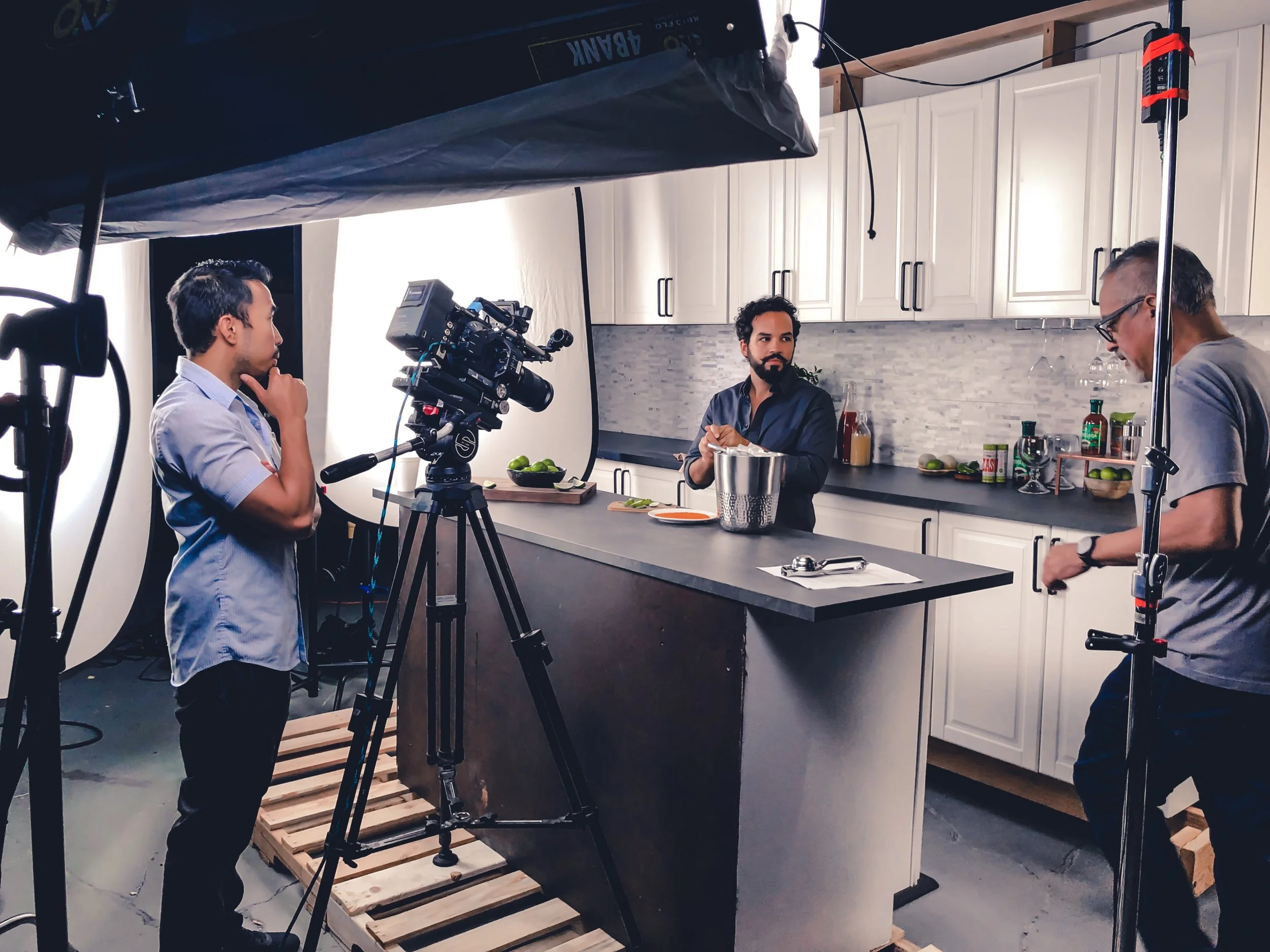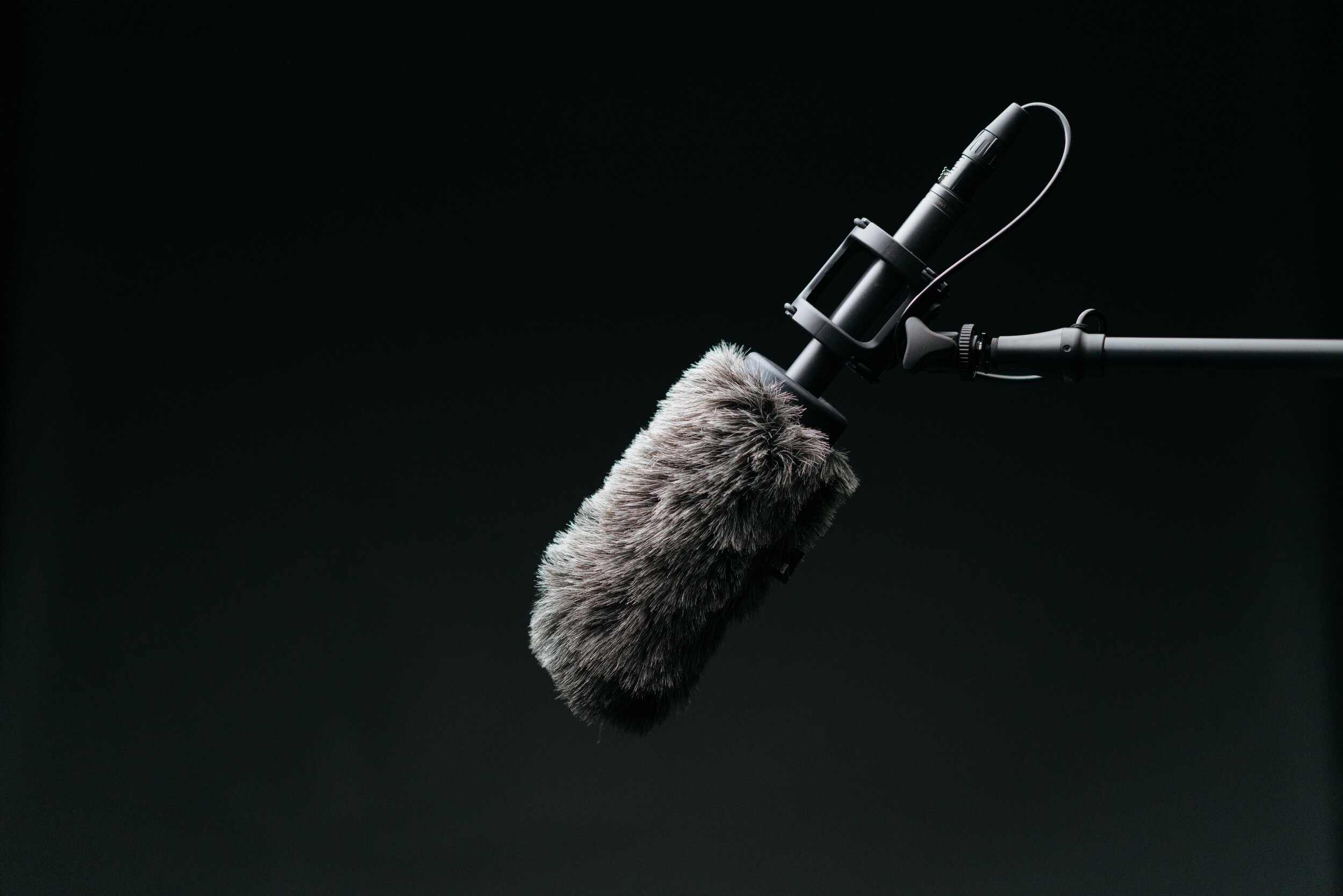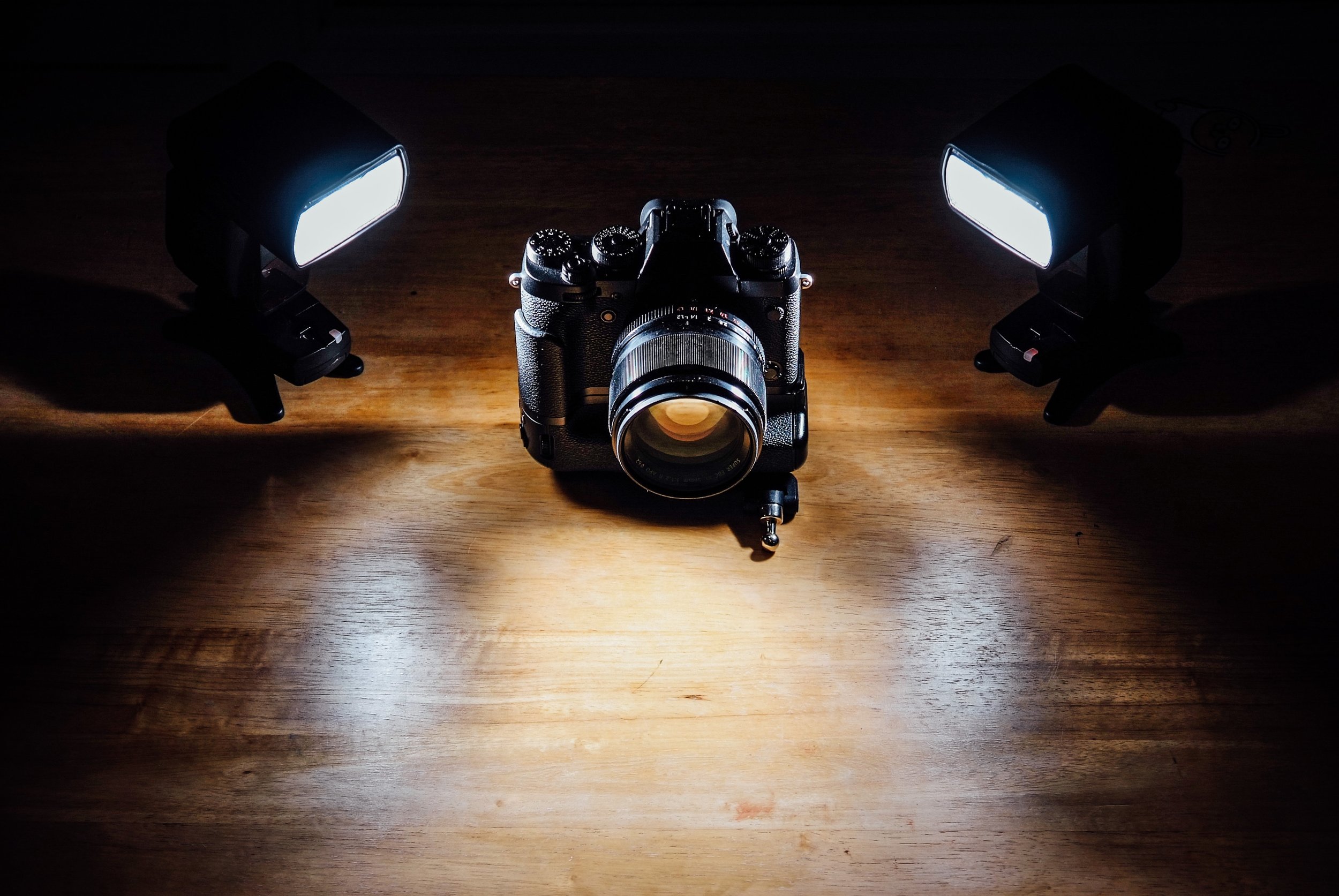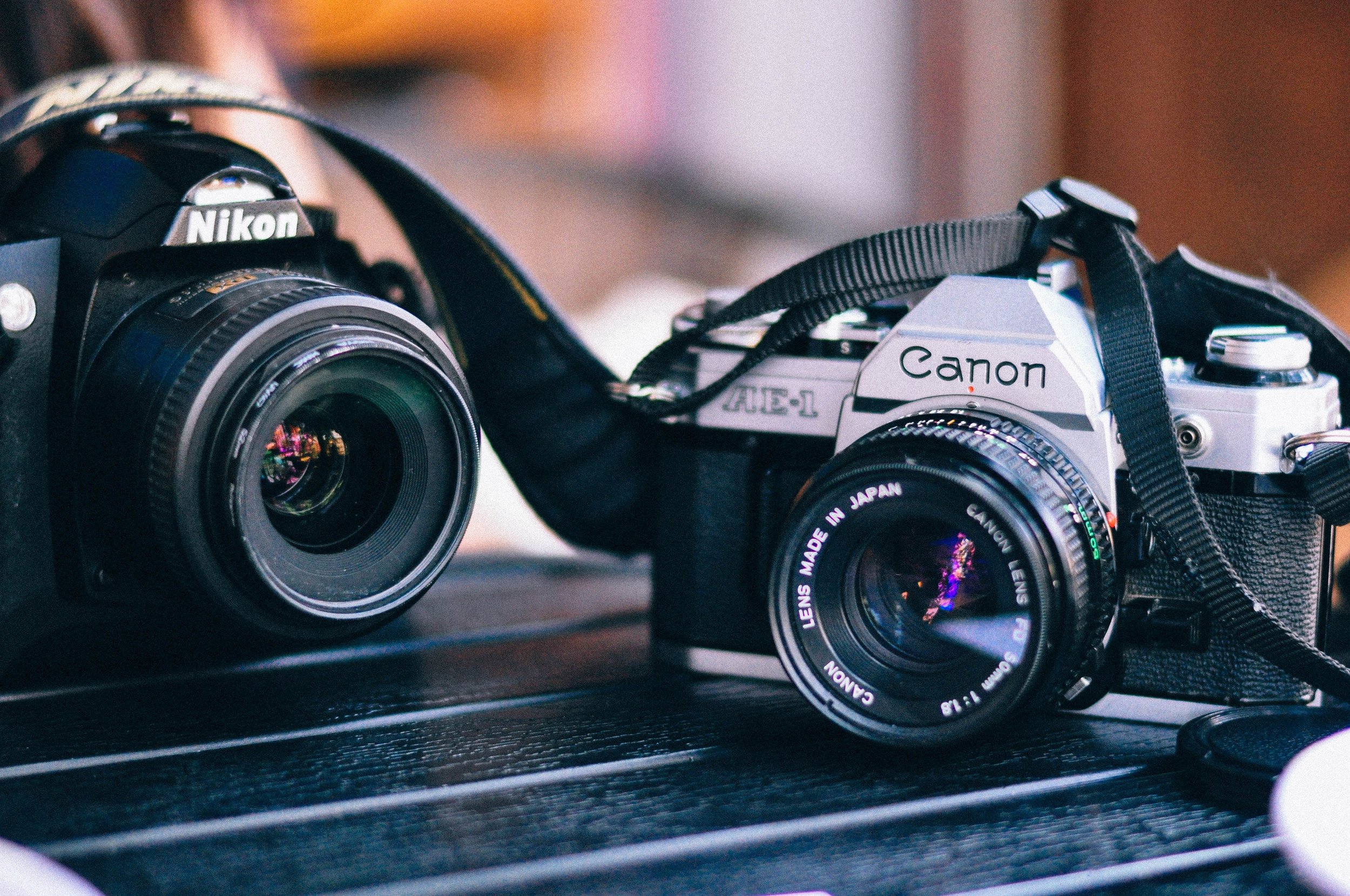The position and height of the lights are also key (pun intended). It can be placed overhead, pointing down on your subject, at eye level, or from below - each contributes to a specific look and feel. For corporate and basic interviews, the simple way is to have the key and fill light at eye level with the subject and positioned in the V formation like the image above.
What if the lights are too harsh? Use softboxes or diffusion gels, silks, and panels to soften the lights. What I do as an easy and inexpensive option is buy diffusion silk fabric from Amazon, cut out pieces that would fit onto my lights, and clip the pieces of fabric to the barn doors of the lights using clothespins or C-47’s (film terminology). As for lights, there are a lot of options. For an inexpensive setup with versatility, I own a set of Neewer LED Lights with barn doors (crucial for controlling your light source!). I also love Arri Skypanels, KinoFlo Select LED’s, and Litemats but for the sake of budget video production, you can do a lot with the Neewer lights I mentioned, especially if it’s just a one-person interview.
Remember the last important piece to 3-point lighting? Don’t worry, I’m not going to quiz you … but if I did and you passed, you would’ve won a trip to Starbucks with me and a cup of coffee lol :) The backlight is an essential piece to the puzzle because it creates separation between the subject and the background. Why do we want separation from the background? Because we want depth in our shot and the subject to not blend into the background. This is important to me because I feel that the human eye is accustomed to focusing it’s attention on objects that are in the foreground so creating that separation through lighting helps the viewer concentrate on the subject and not the brewery or live band in the background. The backlight also create a “halo” effect around the subject so you can see their outline, and is also called a “hair” light because it emphasizes the shape of the person’s head and hair, giving them a clear outline for the viewer to focus on.
As for the intensity of this light, I like it at 25% with diffusion. This is also your preference and also depends on your subjects’s hair - a bald man’s head can look quite shiny and distracting with a hair light. The position of the light should be out of frame and is usually placed above the subject pointing down, although I’ve backlit subjects with the light pointing up from the floor or from eye level off camera. The reason why is that in some situations, you won’t have the ability to hang a light above the subject and place it directly behind their head, so you have to find a way to light the back of the subject without having the light in the shot. My preference is off camera to the side at eye level at 25% with diffusion. A cool halo effect does happen when you place the light on the floor facing up towards the subject’s back, depends on the kind of look you want.
What if you only had 1 or 2 lights? How about no lighting equipment? I would use the sun or “practical” lights (what’s available on location like room lights or lamps) as the key or fill (depending on the intensity) and your other light as the fill, key, or back light. For example, if I was filming an interview in the day and all I had is one light, I’d use the sun to light my subject as the key light, and my one light as the fill light to illuminate the shadows on their face. A bounce board or reflector is useful in daytime exterior shooting because you can use the sunlight’s reflection to “bounce” back on to your subject’s face to fill in the shadows. If I was at an event and there were overhead lights that fully lit up the room, I’d use my other light as a back light to help separate the subject from the background since the subject would already be lit by the room’s practical lighting. And if you had no lighting equipment, you’re screwed! Not really, just challenged. The best source of light is the sun so you can light people next to windows, in the shade, or under the sun; just remember the position of the sun during the day to anticipate for shadows. At night or inside with no lighting, then you have to find some light source and use your camera’s settings to get the image possible with the lighting you have, more on that in another post.
So there you have it, film school lighting in one post. There are so many other factors that I should mention and all you film school graduates out there are already typing in my comments, but I want to keep this short and simple for people that just want the best possible solution for an affordable price with consumer equipment. If you want to nerd out on lights and lighting, email me! I’d love to share and learn more :)
I hope this was helpful. Remember the brightness ratio of your key and fill lights depending on your shadow and depth preference (I like 100% key, 75% fill, 50% backlight). Your backlight separates your subject from the background to help your viewer focus their attention. Diffusion is very helpful in creating beauty lighting and soft features. Use bounce boards and reflectors when working with the sun. And of course, experiment and practice! I’m not an master, just an artist that loves making videos :) Email me if you have any questions, thanks for reading!
Gratefully,
Mitchel Dumlao













